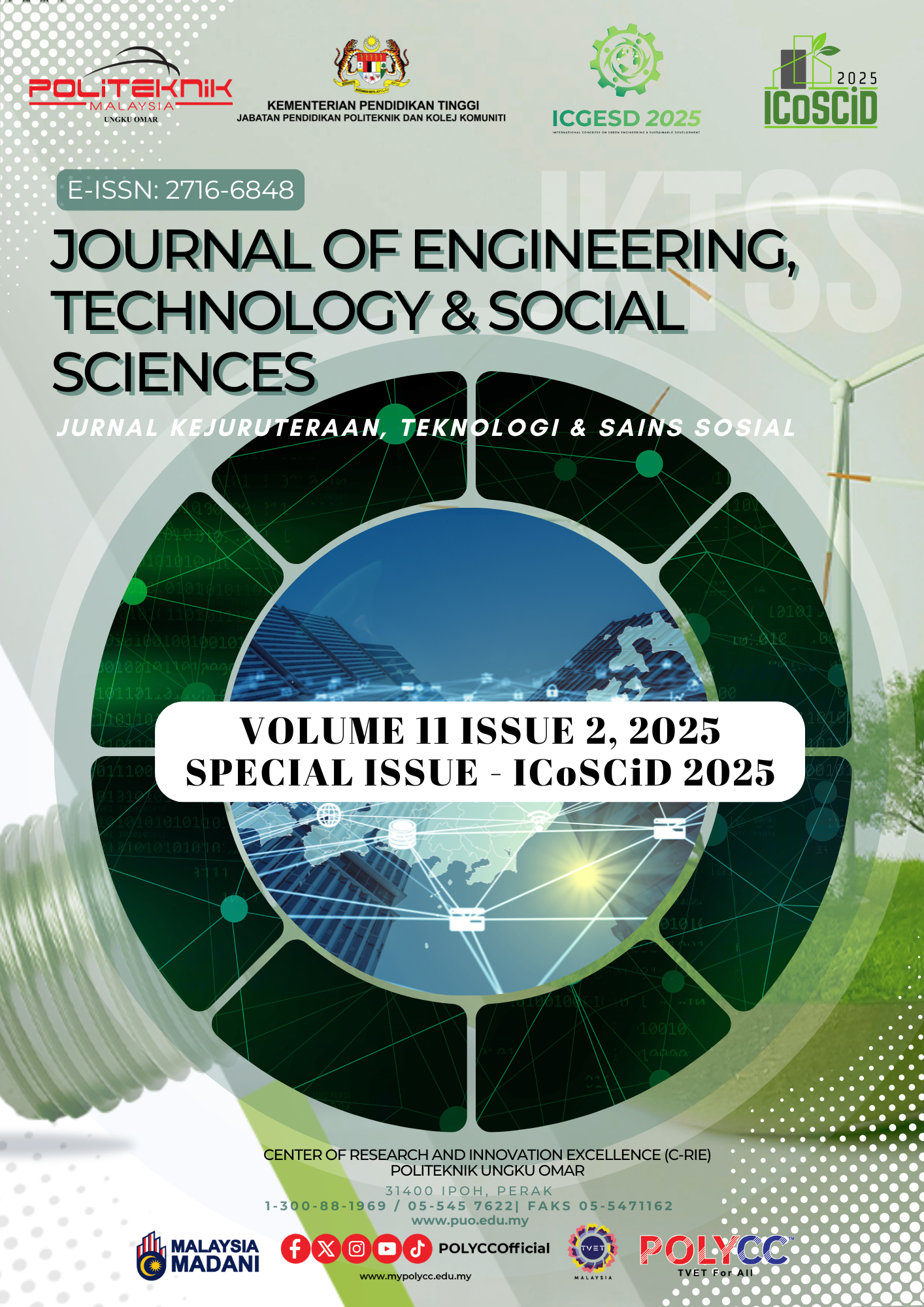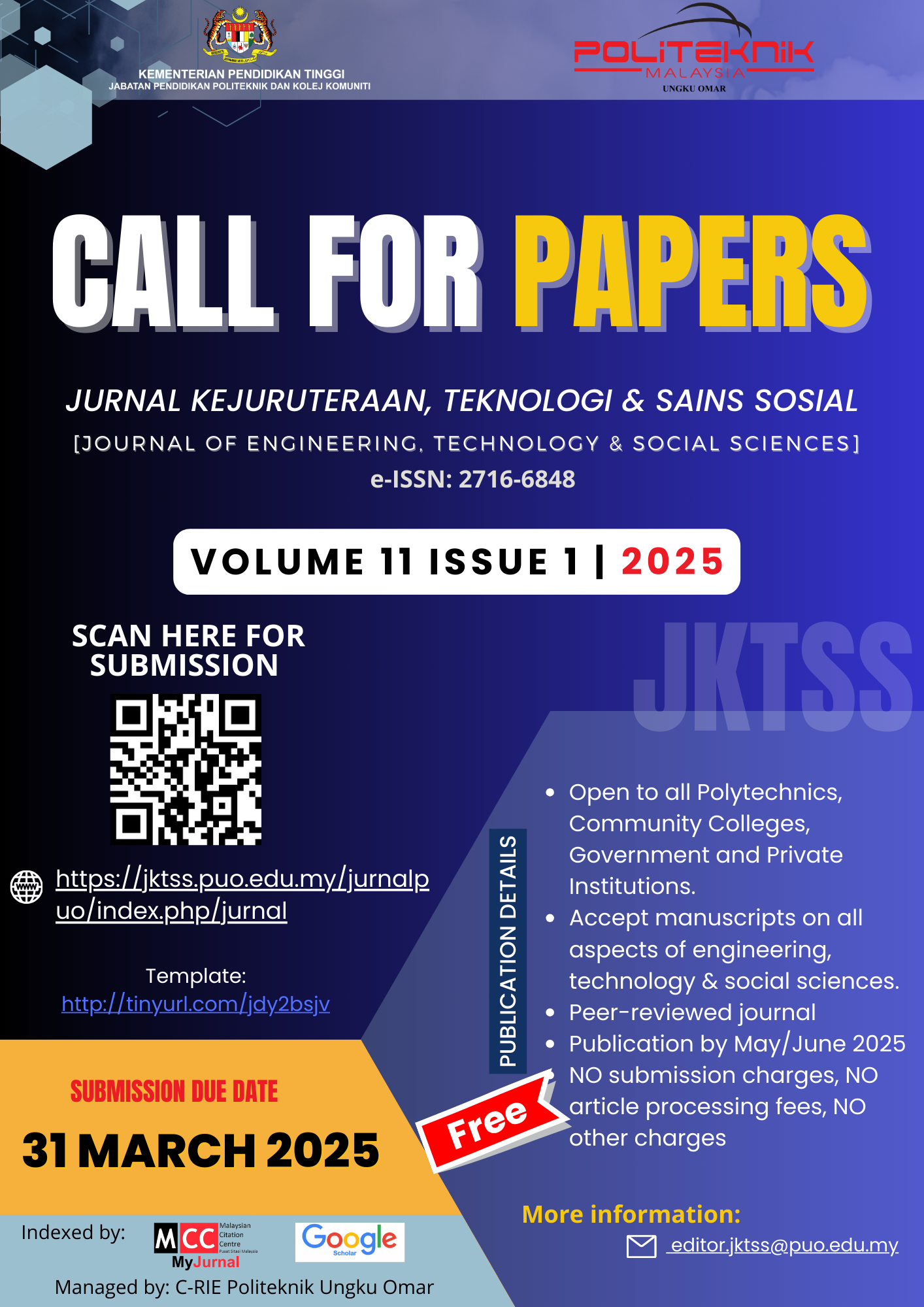WIND SPEED PATTERNS FOR RAIN ENHANCEMENT POTENTIAL AREAS DURING MONSOON SEASONS
Keywords:
cloud seeding; wind speed; kriging interpolationAbstract
Rain enhancement, or cloud seeding, is a weather modification method designed to stimulate precipitation in areas affected by water scarcity. The effectiveness of cloud seeding operations (CSOs) is often constrained by complex climatological factors, particularly wind speed and direction, which determine the dispersion of seeding agents. This study investigates spatial wind speed patterns in Peninsular Malaysia during monsoon seasons using a geospatial approach. Wind speeds at the operational seeding height of 2 km were extrapolated using the logarithmic wind profile, while kriging interpolation was applied to map and classify wind speed variations. Validation of the interpolated results demonstrated strong accuracy, with coefficients of determination (R²) of 0.9624, 0.9677, and 0.925 for January 19, 2020; May 4, 2023; and July 29, 2024, respectively. Findings indicate that wind speeds below 10 m/s are suitable for CSOs, with observed values in seeded areas ranging between 1.6 m/s and 6.7 m/s. Seasonal mapping of wind speed patterns provides critical insight for identifying potential rain enhancement zones and optimizing operational planning. This research highlights how geospatial analysis supports decision-making by enabling agencies such as MET Malaysia to prioritize suitable areas, select favourable seeding times, and improve the overall efficiency and effectiveness of cloud seeding operations.










